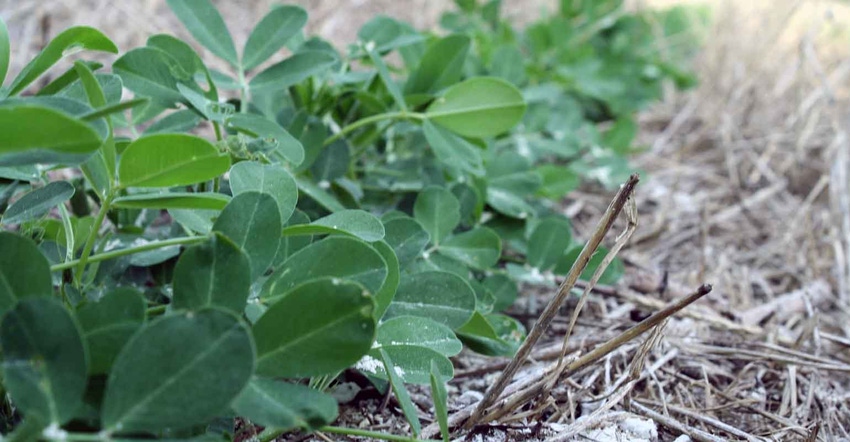
Even before war in Ukraine began, the 2022 cropping season was shaping up to be a difficult one in the Southeast. Rising fertilizer prices and increased costs of other inputs coupled with restricted availability of fungicides, herbicides, and insecticides meant farmers already faced significant challenges. Rising fuel prices will make a tough situation even more difficult.
As this tragedy grows ever darker, the Russian invasion will undoubtedly affect our lives and our country in ways that we cannot yet imagine. There will be impact on American agriculture and American farmers, not the least of which will be sorrow felt in kinship with the farmers and their families in Ukraine.
As the onslaught continues, the sunflower has become a symbol of solidarity with the people of Ukraine. The sunflower is not only their national flower, but also one of that beleaguered country’s most important crops. By some estimates, 30% of Ukrainians live in rural areas and more than 14% of the nation’s workforce is engaged in agriculture. We in the southeastern United States can identify with much in there.
Understandably, every farmer here in the Southeast will be searching for ways to cut production costs. However, cutting production costs without careful consideration to effect on yield could have a negative impact on profit. Because my “wheelhouse” is management of diseases and nematodes, below are suggestions that could both effectively manage diseases and protect yield and also reduce input costs as well.
Plant disease and nematode resistant varieties. Planting peanut, cotton, and soybean varieties that have resistance to root-knot or root-knot AND reniform nematodes will save on the cost of nematicides, though growers will still need to consider products for control of thrips. Growers can also plant peanut, soybean, and corn varieties which have increased resistance to diseases. Planting these varieties may not eliminate the need for fungicides, but the disease resistance could reduce the number of applications needed for an effective program and also increase the opportunity to use less expensive products. Information on resistant varieties should be available from seed dealers and your local Extension office.
Scouting a crop for diseases is an excellent strategy. Putting “boots in the field” or hiring a qualified scout can help a grower increase profit in several different ways. First, fungicide applications made upon early detection of a disease in a field provide the best protection of the crop from yield loss. If disease is not detected after careful scouting, fungicide applications can be delayed and possibly eliminated. Results from scouting may also allow growers to consider stretching intervals between fungicide applications.
Use Peanut Rx. The 2022 version of Peanut Rx, which can be found on-line at www.peanutrx.org, offers the opportunity to assess potential risk to tomato spotted wilt, leaf spot diseases, and stem rot (white mold) prior to planting. By considering factors such as variety, crop rotation, planting date, tillage, seeding rate, row spacing, and field history, growers can tailor specific prescription fungicide programs based upon “risk”. Where risk is “high”, growers should use a more aggressive fungicide program to maximize yield and profit. Where risk is reduced, growers are often able to deploy programs with fewer sprays or with reduced fungicide rates without compromising yield. In 2022 prescription fungicide programs are available from Syngenta Crop Protection, Bayer CropScience, BASF, CORTEVA, FMC, NICHINO, and SIPCAM.
Hunting for longer protective windows. Peanut growers who use Velum in-furrow at planting can begin their leaf spot fungicide program at 40-45 days after planting, as opposed to 30-35 days. Use of Thimet at-plant can also reduce early-season risk to leaf spot; however probably not enough to delay the start of a fungicide program.
Growers who use Priaxor or Lucento in their first fungicide application can also begin their fungicide program at 40-45 days after planting. Corn growers get about two weeks of protection when single-mode of action products such as tebuconazole and azoxystrobin are applied for control of southern corn rust. Use of mixed-mode of action products, where triazole and strobilurin fungicides, or SDHI, triazole, and strobilurin fungicides are pre-mixed, often increases the protection window by another week.
Difficulties we as American will face in the coming weeks and months pale in comparison to what our friends in Ukraine most endure. The images reaching us via the Internet and the evening news are gut-wrenching and heart-breaking. As we move forward in the 2022 cropping season, growers can plan steps that help manage input costs and improve profits without sacrificing yield. My belief is that every grower who plants a field of sunflowers this year, everyone one of us who passes them on the highway, and everyone who attends a dove shoot next fall will take a moment to remember the brave people fighting and dying in Ukraine.
About the Author(s)
You May Also Like






